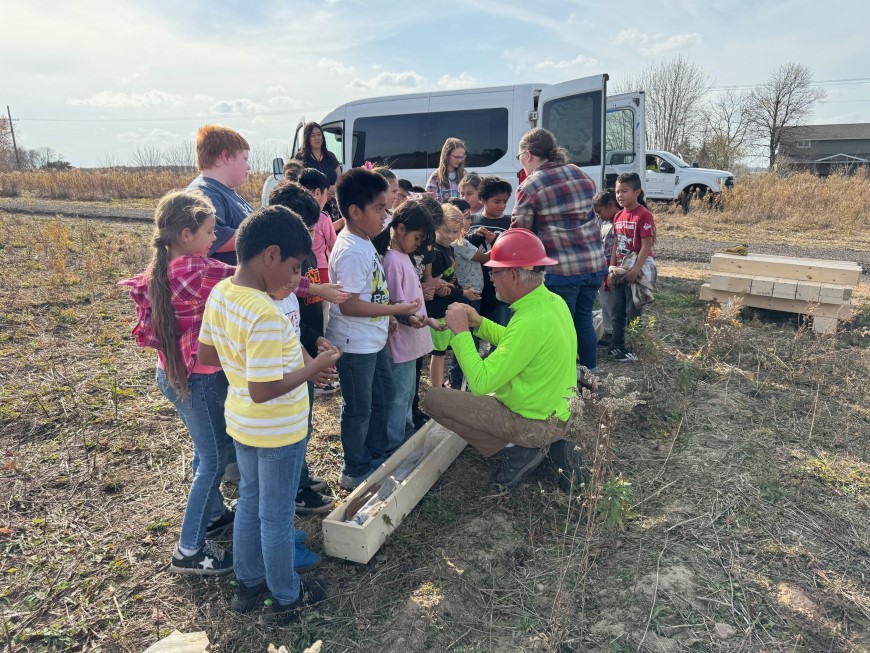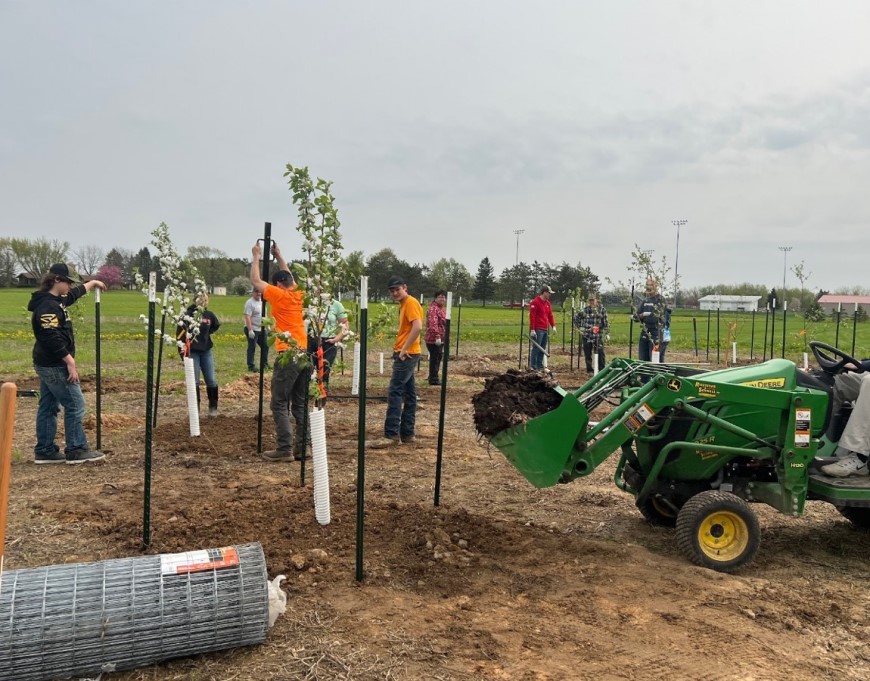Success Stories
When it comes to fixing a contaminated well, there are generally three options: drilling a new well, reconstructing an existing well or installing treatment. But is there another option? One Wisconsin community thought outside the box and developed an option for alternative land uses.
Working To Lower Nitrate Levels: A Local Story
Abbotsford, a small Wisconsin community in Clark and Marathon counties with a population of 2,500, relies on a number of wells to provide a safe drinking water supply. The geology of the area limits groundwater availability, which places added importance on protecting existing groundwater resources. In 2021, the Wisconsin DNR-led Source Water Protection Team identified three city wells with rising nitrate levels located next to the Abbotsford School District’s agriculture field. The Source Water Protection Team regularly reviews statewide groundwater quality data to help communities identify potential sources of groundwater contamination and prevent contaminant levels from increasing in water supply wells.
With this DNR-provided information about Abbotsford’s well water quality, the city and school district collaborated with the Wisconsin Rural Water Association (WRWA) and the Thriving Earth Exchange to explore alternative land uses that balance financial needs with environmental stewardship.
The group developed ideas to transition the school district's agriculture field to a new purpose that would generate alternative revenue and decrease the fertilizer inputs, thereby potentially reducing nitrate concentrations at the city’s wells. Abbotsford students were actively involved in enhancing the site’s ecological value by planting native vegetation and fruit trees, as well as constructing a walking trail. To better understand local hydrologic conditions, the DNR partnered with the Wisconsin Geological and Natural History Survey (WGNHS) to install four monitoring wells and collect soil samples 50 feet below the surface. Students also witnessed drilling operations and the collection of soil samples. This valuable hands-on educational opportunity allowed them to learn about local geology and groundwater quality.
The three municipal wells with rising nitrate levels and monitoring wells are now being monitored frequently to assess the effectiveness of the land-use conversion alternatives. Data collected from the municipal and monitoring wells will aid in future land management decisions in Abbotsford and assist other communities facing similar challenges.
The DNR, in partnership with a network of collaborators including the WRWA and the WGNHS, offers funding, outreach and technical support for various initiatives to safeguard drinking water across the state. These projects include on-the-ground studies to evaluate nutrient management programs, conservation practices and practical applications like the Abbotsford collaboration, which aims to lower nitrate levels in public water supplies.
Protecting Water Sources
Alternative land use is a preventive measure to keep drinking water supplies safe from contamination. Preventing contaminants from entering public water supplies in the first place is the preferred and most cost-effective way to safeguard drinking water supplies. Source water protection is a “first line of defense” approach to protecting our drinking water. Managing land use that contributes safer water to wells requires partnerships, collaboration, time and commitment. However, these efforts can pay off by protecting water supplies and reducing infrastructure costs while protecting public health.


